BS”D
Suka 46a (2)
Kislev 26, 5783. December 20, 2022
1- We finished the Sugya of the ברכות of סוכות and moved on to the next topic.
2- Before we began, an interesting observation was made:
The Shiur was on the third night of Chanukah.

In the Yeshiva world there is a saying in the name of the חתם סופר that one who learns גמרא and comes across a פסוק (in the גמרא) from that day’s or week’s portion of the חומש, it is proof that he learns Torah לשמה!
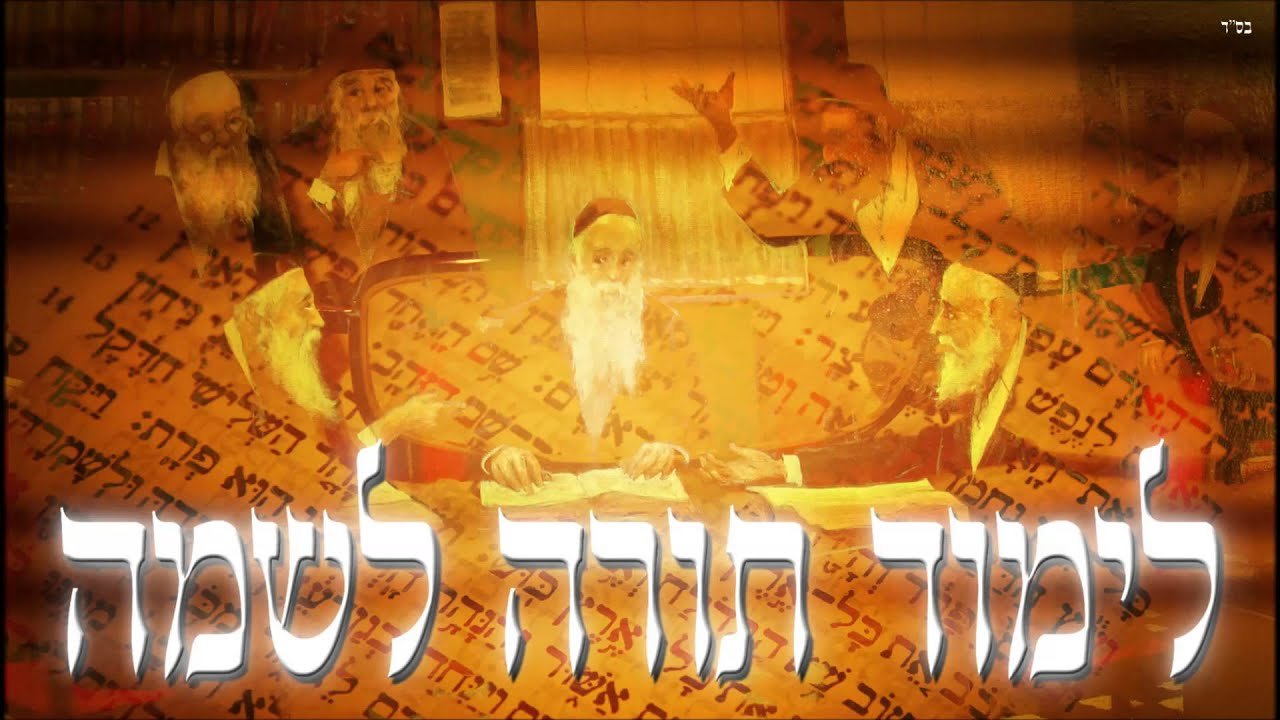
Well, do we need more proof about the quality of our learning when the גמרא we encountered, in מסכת סוכה, talks about חנוכה?!
3- Here is the Chasam Sofer.
חתם סופר על התורה” חלק “’ י”ל ע”י מכון להוצאת ספרים וכת”י ע”ש החת”ס זצ”ל ירושלים תשס”ז ליקוטים תהילים עמוד קנז
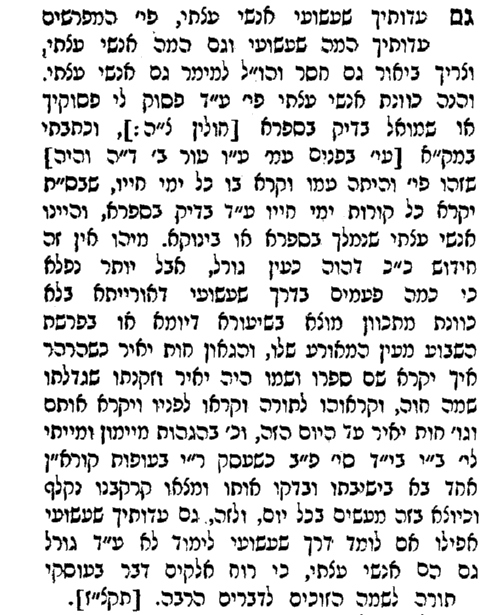
He quotes a few sources about encountering חומש of the day and other occurrences during learning.
A- The book חות יאיר, by Reb Yair Bachrach 1638-1702.
חות יאיר means ‘the farmlands of Yair’. This was what יאיר בן מנשה named the land he captured on the East side of the Jordan in the times of Moshe Rabbeinu.
וְיָאִיר בֶּן מְנַשֶּׁה הָלַךְ וַיִּלְכֹּד אֶת חַוֹּתֵיהֶם, וַיִּקְרָא אֶתְהֶן חַוֹּת יָאִיר
When deciding what to name his book, Reb Yair Bachrach, received an עליה with that particular Torah portion.

The author, Reb Yair Bachrach, took the עליה as a sign and merged his grandmother’s name, חוה, and his own name, Yair, to create the title of the book שו”ת חות יאיר.
B- The הגהת מיימוני write that when one of the ראשונים was studying whether a particular bird (Korin species?) was Kosher, the bird flew by, perched itself next to him and he checked its סימנים.
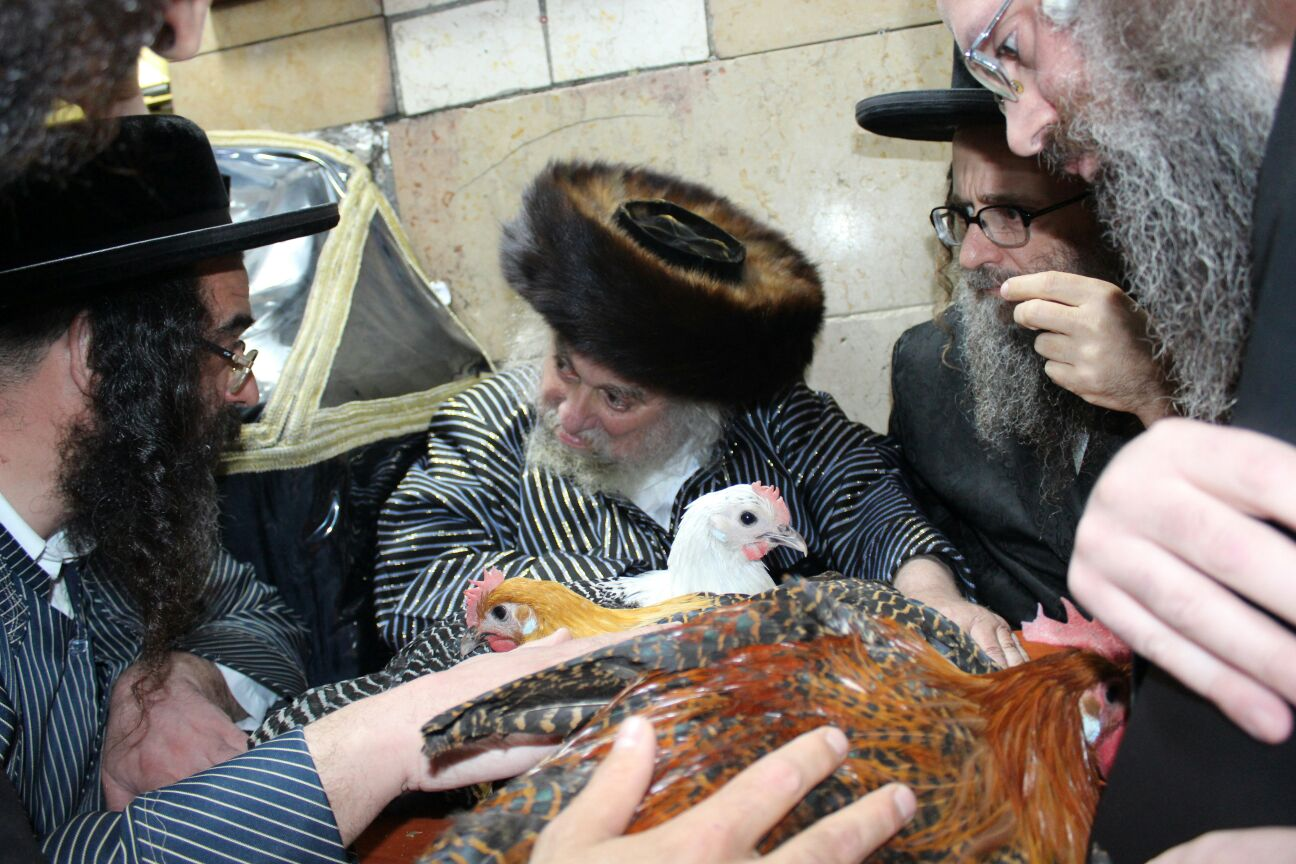
See here in the בית יוסף. YD 82, 2.

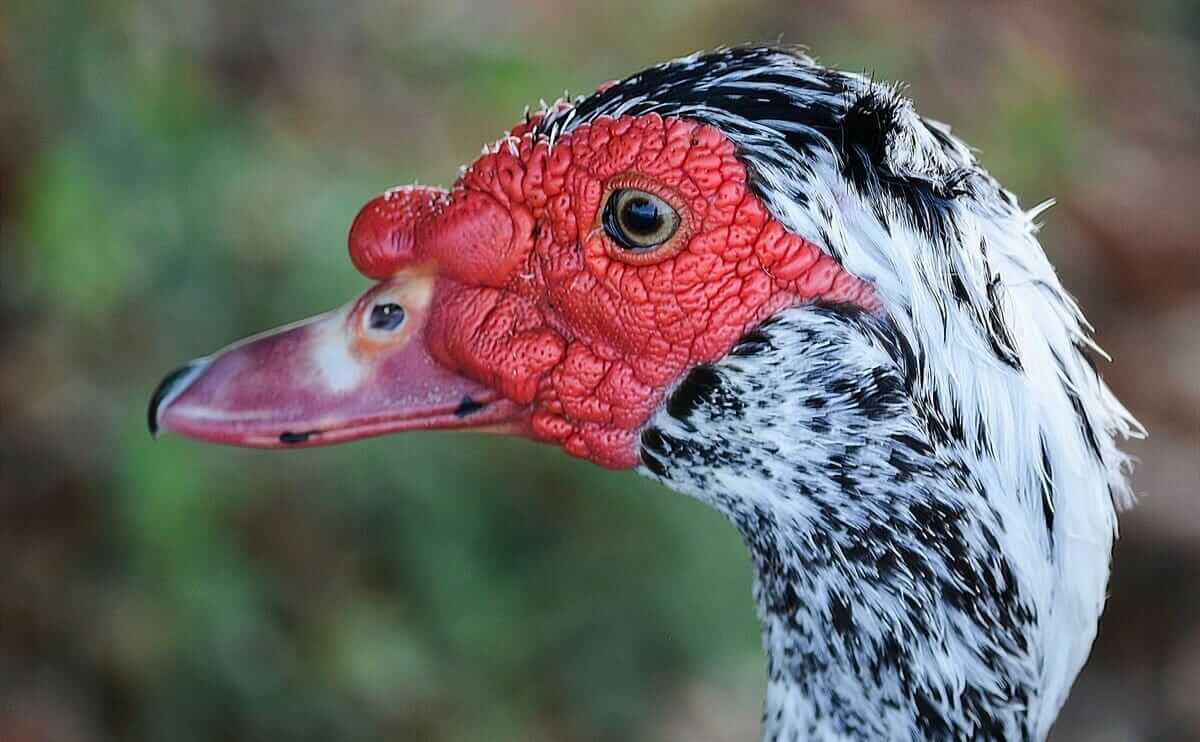
The Chasam Sofer concludes that “this is due to the Spirit of Hashem speaking within the ones that study Torah לשמה….”
4- So here is the גמרא about חנוכה.
Firstly, as we learnt last week, there is the opinion of numerous אמוראים that all Mitzvos דרבנן do not require a ברכה. Our Gemara states that the Halachah is that a ברכה is indeed made on the lighting of the Menorah as well as on all מצוות דרבנן.

Secondly, the interesting הלכה concerning someone that is both – traveling and will not personally light נרות חנוכה and neither does he have his family lighting in his house. Such an individual, when he encounters a lit מנורה must make the שעשה ניסים לאבותינו. On the first night, he also adds שהחיינו. OC 676.
5- We mentioned the opinion of the ב”ח and others that even if one’s family lights the מנורה in his home, he must say this ברכה upon his first sighting.
Their reasoning is that the obligation of הדלקת הנרות is twofold.
1- His home and assets need to light. פרסומא ניסא
2- He personally must participate in the lighting. הודאה על נס.
Thus, if one is home and lights or is present at the lighting both 1 and 2 are fulfilled.
When traveling and someone lights in his house, only #1 is accomplished. He personally has ‘not experienced הדלקת הנרות‘. He needs to see a Menorah and say שעשה ניסים לאבותינו.
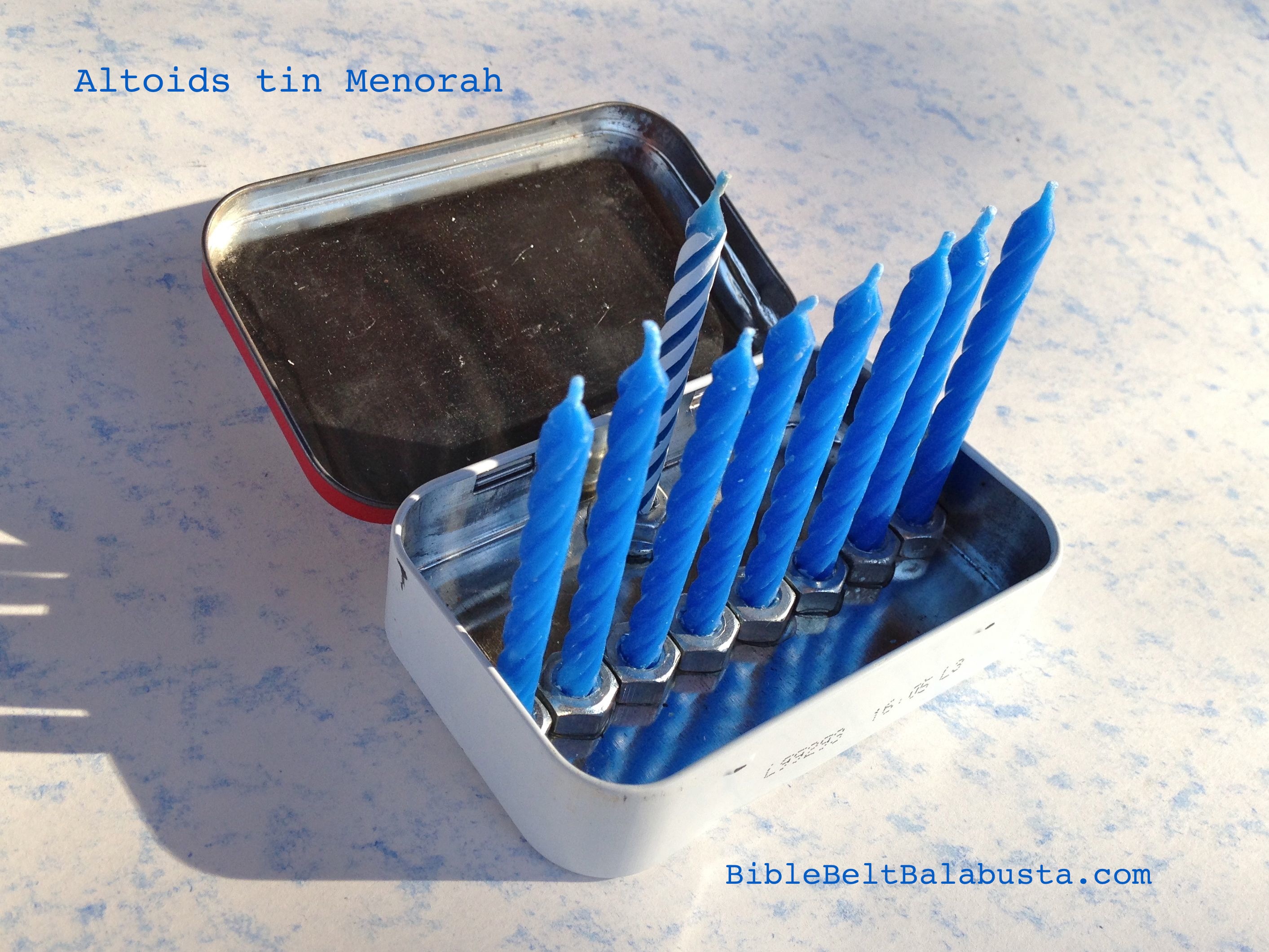
6 – We finished off with an interesting topic about the מנורה. A few researches, specifically Reb יעקב ישראל סטל of Israel, have written about this. Reb
יעקב ישראל is a 45 year old יונגרמאן that is a very learned תלמיד חכם and researcher.
In one of his recent well researched articles he discusses a particular פיוט (liturgical poem) concerning the מנורה of the בית המקדש, penned by the famed Jewish poet יניי or ינאי.
Although יניי is mentioned by the רס”ג- Reb Sadia Gaon and רבינו גרשום מאור הגולה as one of the ‘חכמים הראשונים’ that wrote קרובות לכל סדר וסדר, not much is known about this individual poet- פייטן. Most of his writings have been lost over time. See here from the Cairo Geniza.
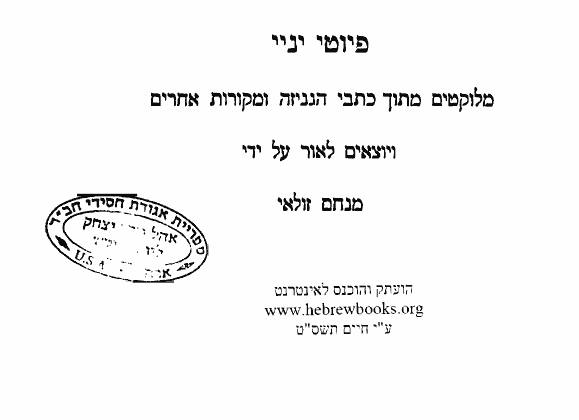
יני wrote פיוטים on every פרשה but followed the Minhag ארץ ישראל that completed a full Chumash cycle every three years.
This Piyut is recited in some Ashkenaz communities on פרשת בהעלותך.
Here are the lines of this Piyut סטל discusses:
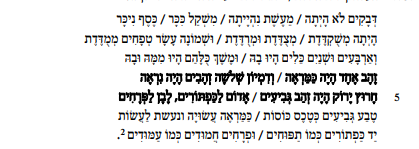
See here from פיוטי יניי the Rebbe’s library:
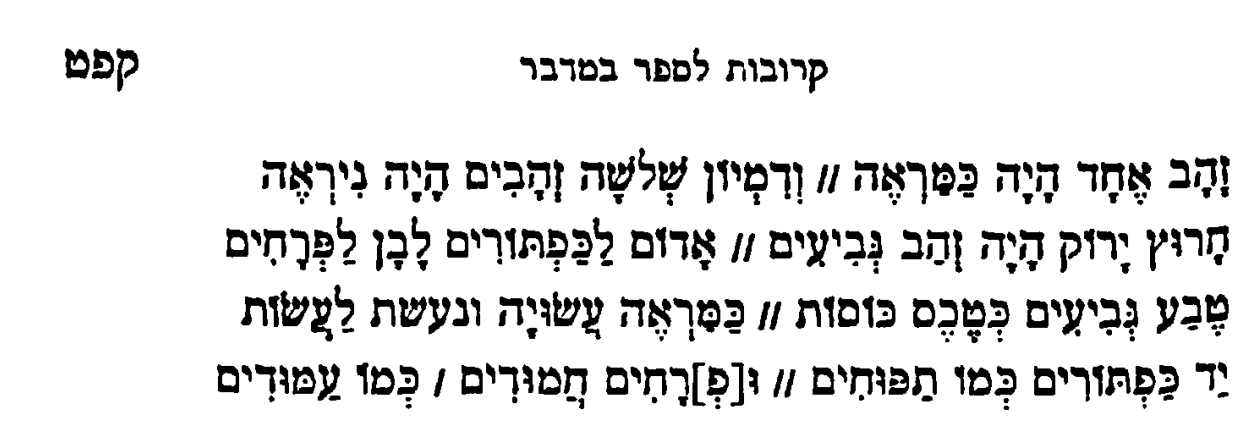
In short, the poet seems to say that the מנורה, despite it being crafted from one solid piece of gold, was….multicolor!

The גביעים were green gold.
The כפתורים were red gold.
The פרחים were white gold.
[What color is ירוק? see this Shiur #5]
Likely, suggests סטל, it is based on a מדרש:
כיון שהראה לו הקב”ה מעשה המנורה, נתקשה בה משה. אמר לו הקב”ה: הרי אני עושה אותה לפניך. מה עשה הקב”ה? הראה לו אש לבנה, ואש אדומה, ואש שחורה, אש ירוקה, ועשה מהן את המנורה, גביעיה, כפתוריה, ופרחיה וששת הקנים, והוא אומר לו: כך וכך עשה אותם… שהראה לו הקב”ה באצבע את המנורה
[סטל discusses the 4th color ‘black gold’ in the Midrash and suggests that perhaps it was the center post or the background that was black]
How is that possible if gold, in its natural state, is yellow and only when mixed with other alloys does it change colors? However, the מנורה was crafted using only זהב טהור.
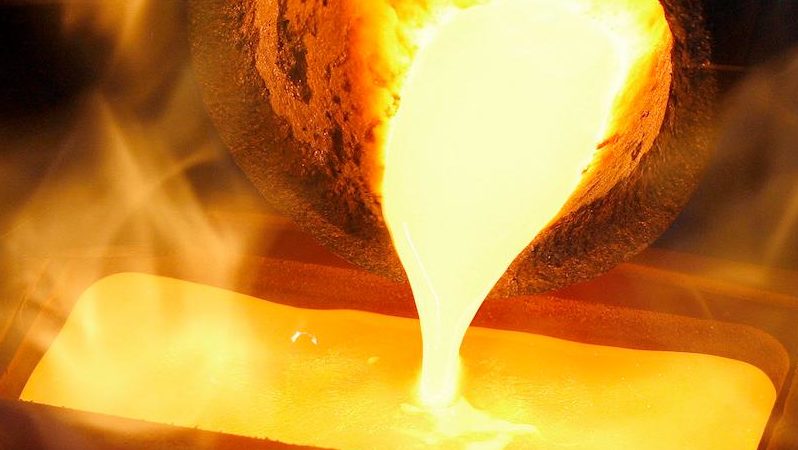
Is this why משה רבינו had a tough time with creating the מנורה and, as we know, ultimately it was created miraculously?
Read the linked article at length.
סטל then researched many early illustration and mosaics from the 3rd to the 13th century that indeed show artisans depicting the מנורה (not only in yellow gold but also) with green red and white.

Does that mean that at a time in history, Jews had a tradition that the Menorah was multicolor?
Photos reprinted with permission of Reb Yakov Stal with our thanks to him.
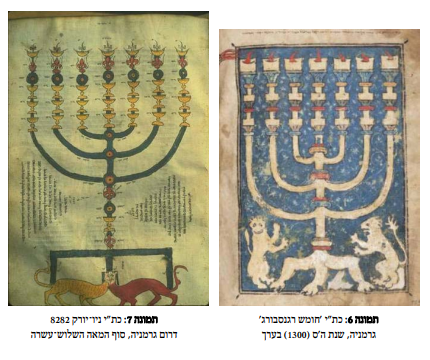
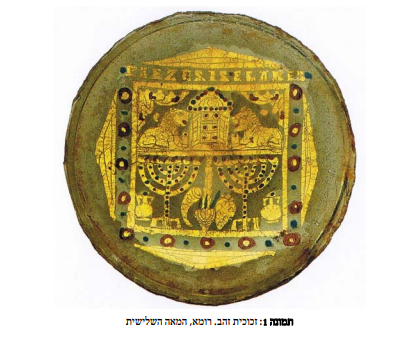
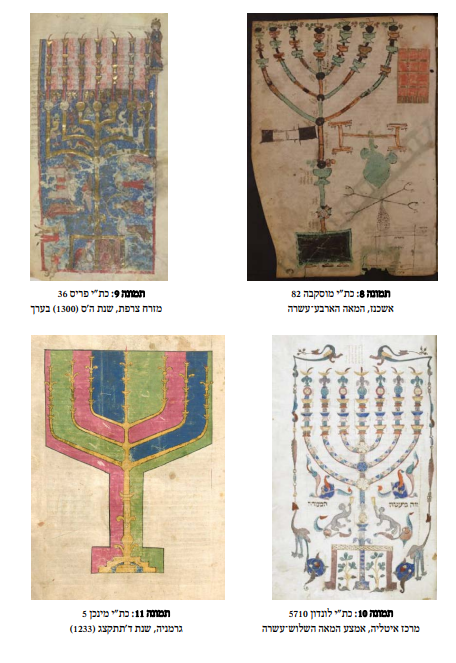
Here is the link to the article.